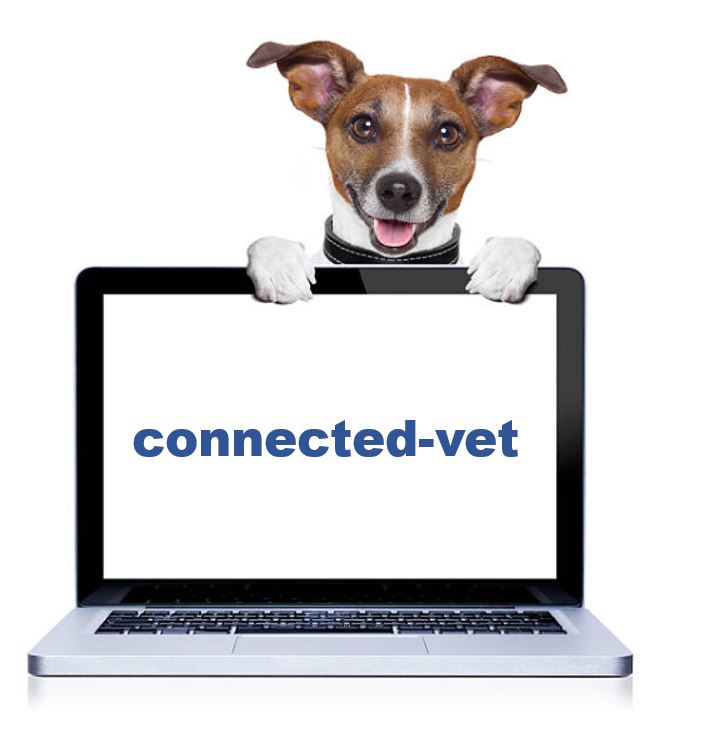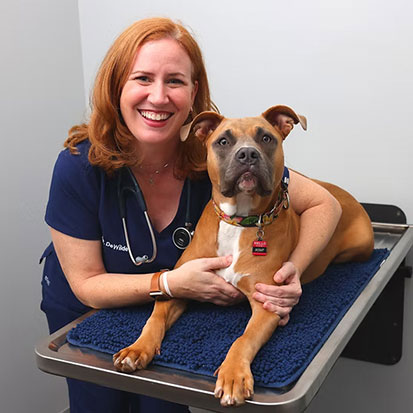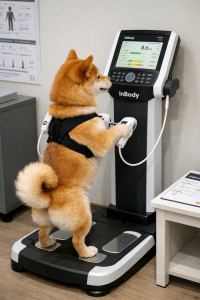October 14, 2025
From conference sessions to industry professionals, it’s no longer a question of whether to incorporate artificial intelligence (AI) into veterinary practice, but how.
At the American Animal Hospital Association (AAHA) annual conference, held September 11-13 in Chicago, three sessions explored ways to leverage AI in veterinary practice for smarter marketing, streamlined workflow, and personnel management.
« We are all doing a lot in practice, right? We’re all trying to do the best we can by our clients, by our teams, and by our bottom lines, » said Dr. Caitlin DeWilde, who presented the sessions. « We are veterinary people. We are not graphic designers. We are not marketers. … We’re also trying to do a lot of things with a singular title. So how do we do all that with AI? »
Clicks to clients
AI can level up your game—if you use it effectively, said the founder of The Social DVM, a veterinary-specific digital marketing firm. It can help with, though not limited to: content creation and management, digital marketing, client communication, technical logistics, practice management, and even human relations (HR).
An important goal behind content creation is to convert clicks to clients, Dr. DeWilde said, so start sending a monthly newsletter.
Large competitors like Chewy stay visible with frequent email campaigns, sending around two emails weekly, when most veterinary practices send only one or two emails a year, Dr. DeWilde said. AI can help bridge that gap by repurposing content—such as a new veterinarian’s biography—across multiple platforms, from Google business profiles to blog posts to email newsletters and social media.
« Now, with AI, it’s much more attainable for us to do this, » she said, encouraging monthly emails that are not appointment reminders or annual vaccine notices. « Give them something valuable. Let them form that relationship and bond with your team. »
When using AI to develop content, it’s all about the prompt.
Dr. DeWilde gave the example of using ChatGPT to create a caption for a social media post welcoming a puppy to practice for the first time. The output, she said, was « too cutesy, » with emojis she had never seen and generic hashtags.
Instead, she prompted the chat for more specific details about the practice with localized hashtags and a « less cutesy » tone. That ensured the difference between the hashtags #puppylove and #STLdogmoms.
« I need only St. Louis dog lovers to see this post. I would rather have six people in St. Louis see it than 5,000 see it across the United States, » she said.
She emphasized investing in a paid AI account for various reasons like data privacy and security, but also for training for personalization, so the AI can learn and adopt user- or practice-specific preferences, as well as the overall tone your practice aims to convey.
« Everyone in this room has access to the same drugs, the same diagnostic tools, the same ChatGPT, » she added. « The thing that makes us different is our people, right? Our culture. If we’re not giving it those specifics, it is going to give us a very generic response. »
AI can also help with HR: from search engine optimized job listings and repurposing those across social media channels to preparing interview questions.

During one of the sessions, AAHA board member Dr. Melissa Magnuson, owner of Canobie Lake Veterinary Hospital in Windham, New Hampshire, shared with fellow audience members about using AI to analyze call volume after the receptionists asked to hire another member for the front desk.
After analyzing data over a few months, AI determined adding another receptionist was not necessary but did recommend optimizing shifts to schedule more people during busier times. This meant Dr. Magnuson not only could maintain current staffing levels, but also that the team readily accepted the data-supported conclusion.
For everyday logistics, AI can help create consistent standard operating procedures or summarize team meetings.
Potential pitfalls
What AI won’t do is replace humans.
« It may make them more efficient, but it’s not going to replace them, » Dr. DeWilde said. « Clients are not going to form a bond with a chatbot. They’re going to form it with the (veterinary) technician in the room. »
Dr. DeWilde emphasized privacy and security concerns to prevent potential issues and data leaks. She advised clinics to redact personal information before uploading, use encrypted platforms, and avoid allowing free tools to train on sensitive or proprietary information.
Double checking all AI outputs remains critical because of documented incidences of « AI hallucinations, » in which generative AI tools have been shown to produce content that is incorrect, misleading, or nonexistent.
Amid the ongoing prolific expansion of AI in recent years, companies that might have taken up four booths at conferences years ago now span across rows of exhibit halls. Dr. DeWilde offered: « ‘Just because you can’ is not leadership. »
« AI is great with an asterisk, » she said. « With every power comes great responsibility. »
Source : https://www.avma.org/news/ai-will-not-replace-humans







